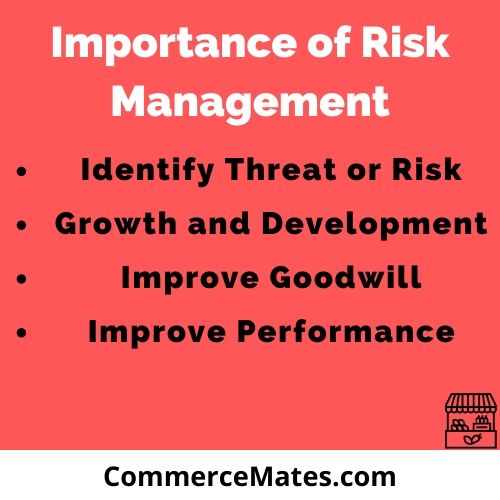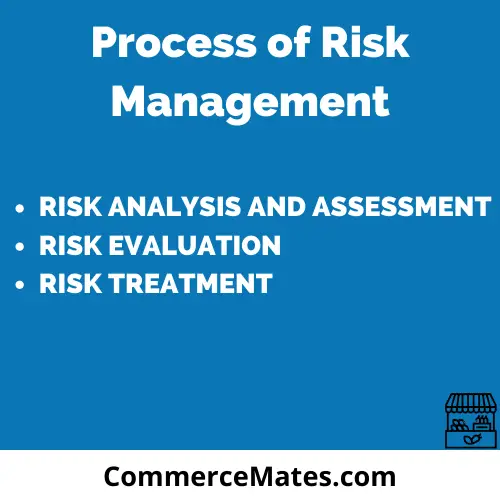Contents
What is Risk Management?
Risk Management is a process of minimizing risk or threat. Risk Management is the process of identifying the threat or risk that may be come after investing the money in the projects. Risk Management helps the business to identify future losses.The manager can predict future threats and take precautions to solve the threats. it includes financial uncertainty, legal liabilities, strategic management errors, accidents, and natural disasters.
Importance of Risk Management

Identify Threat or Risk
It helps the business to identify the risk or threat that may be come in the future. When the manager analysis risk management it reduces the fear of losing investment.
Growth and Development of Business
When the business analysis risk, it reduces the chance of failure and improve percentages of success. if the manager does business tactfully it helps the business to grow. So, Risk management helps in growth and development.
Improve Goodwill
Risk Management helps the business to gain goodwill. Because when the manager does business tactfully and effectively. it improves the value of the business. So, Risk management improve goodwill.
Improve Performance of Employees
Risk Management improves the performance level of the employees. Because when the manager knows the weakness or threats, then he motivates the employees to perform more on that part. So, Risk management improves the performance of the employees.
Process of Risk Management

Risk Analysis and Assessment
The first step in identifying risk management is called risk analysis and assessment. The risk assessment helps the business to identify the daily operations that are impacting the day-to-day events. The risk analysis helps to understand how daily operations are decreasing.
Risk Evaluation
After analyzing the risk, the next step is to the Evaluation of risk. Risk evaluation compares the estimated risk against risk criteria that the business has already established. The Risk criteria include the cost of products, legal requirement and etc.
Risk Treatment
After Evaluation of risk, the next step is to the treatment of the risk. Risk treatment means the implementation of the policies and procedures that will help the organization to avoid the risk or threats that would take place in the future. Risk treatment also extends to risk transfer and risk financing.